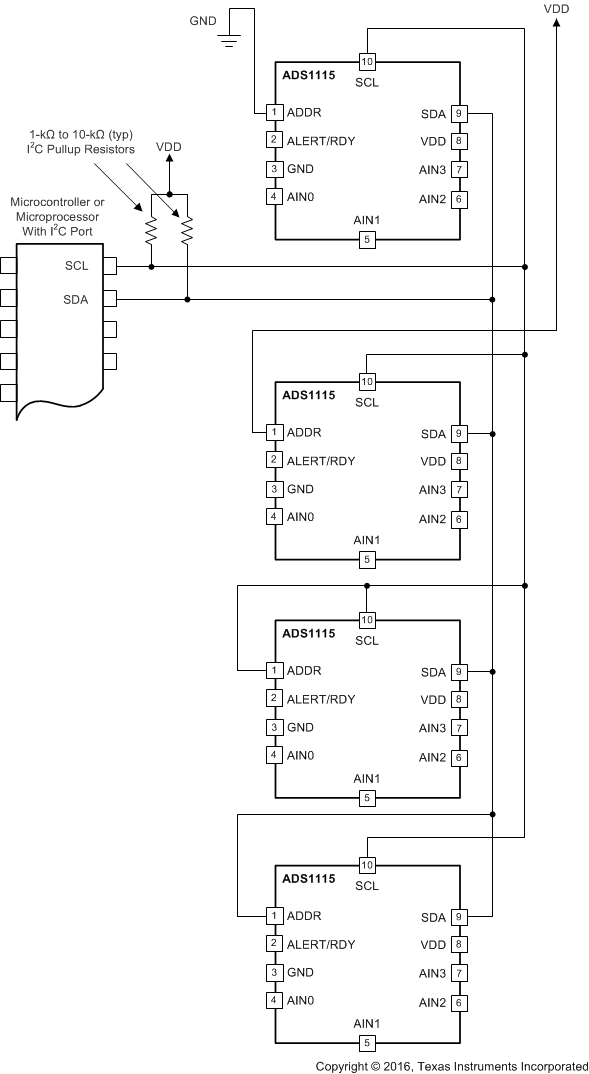ZHCS311D May 2009 – January 2018 ADS1113 , ADS1114 , ADS1115
PRODUCTION DATA.
- 1 特性
- 2 应用
- 3 说明
- 4 Revision History
- 5 Device Comparison Table
- 6 Pin Configuration and Functions
- 7 Specifications
- 8 Parameter Measurement Information
-
9 Detailed Description
- 9.1 Overview
- 9.2 Functional Block Diagrams
- 9.3 Feature Description
- 9.4 Device Functional Modes
- 9.5 Programming
- 9.6 Register Map
-
10Application and Implementation
- 10.1 Application Information
- 10.2
Typical Application
- 10.2.1 Design Requirements
- 10.2.2
Detailed Design Procedure
- 10.2.2.1 Shunt Resistor Considerations
- 10.2.2.2 Operational Amplifier Considerations
- 10.2.2.3 ADC Input Common-Mode Considerations
- 10.2.2.4 Resistor (R1, R2, R3, R4) Considerations
- 10.2.2.5 Noise and Input Impedance Considerations
- 10.2.2.6 First-order RC Filter Considerations
- 10.2.2.7 Circuit Implementation
- 10.2.2.8 Results Summary
- 10.2.3 Application Curves
- 11Power Supply Recommendations
- 12Layout
- 13器件和文档支持
- 14机械、封装和可订购信息
10.1.6 Connecting Multiple Devices
It is possible to connect up to four ADS111x devices to a single I2C bus using different address pin configurations for each device. Use the address pin to set the ADS111x to one of four different I2C addresses. Use the GND, VDD and SCL addresses first. If SDA is used as the device address, hold the SDA line low for at least 100 ns after the SCL line goes low to make sure the device decodes the address correctly during I2C communication. An example showing four ADS111x devices on the same I2C bus is shown in Figure 42. One set of pullup resistors is required per bus. The pullup resistor values may need to be lowered to compensate for the additional bus capacitance presented by multiple devices and increased line length.

NOINDENT:
NOTE: ADS111x power and input connections omitted for clarity. The ADDR pin selects the I2C address.